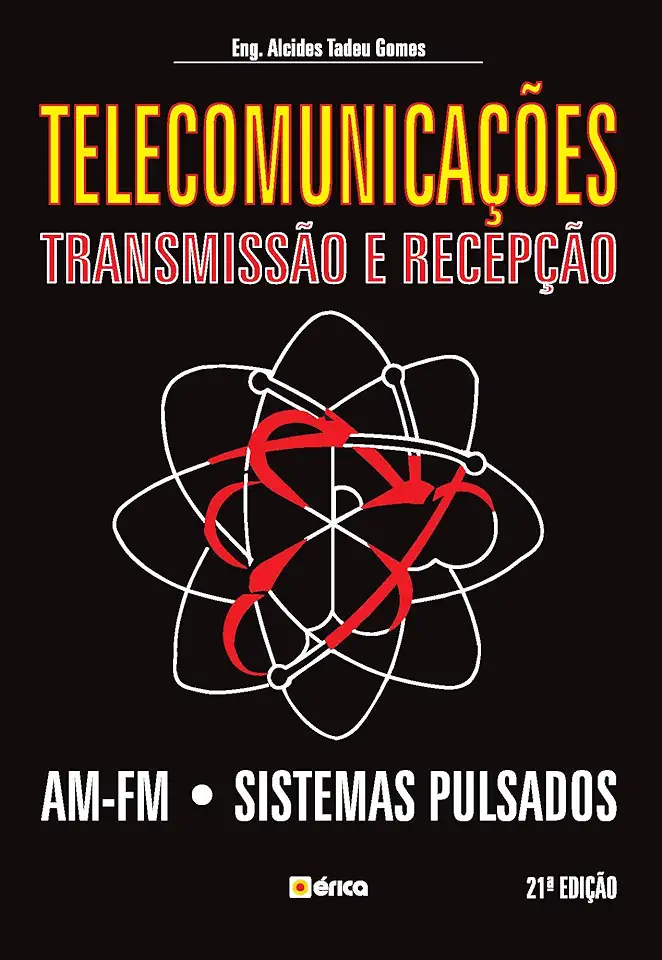
Telecommunications Transmission and Reception - Alcides Tadeu Gomes
Telecommunications Transmission and Reception: A Comprehensive Guide
By Alcides Tadeu Gomes
Introduction
In today's fast-paced world, telecommunications play a pivotal role in connecting individuals, businesses, and communities. From voice and data transmission to multimedia streaming and internet access, telecommunications have revolutionized the way we communicate and share information. At the heart of these advancements lies the intricate field of telecommunications transmission and reception.
Understanding Telecommunications Transmission and Reception
Telecommunications transmission and reception involve the processes of sending and receiving signals over various communication channels. These channels can include copper wires, fiber optic cables, wireless networks, and satellite links. The transmission process involves encoding information into signals, modulating them onto a carrier frequency, and transmitting them through the chosen channel. At the receiving end, the signals are demodulated, decoded, and processed to extract the intended information.
Key Components of Telecommunications Transmission and Reception
Signal Processing: This involves converting analog signals into digital form and applying various processing techniques to enhance signal quality, reduce noise, and optimize transmission efficiency.
Modulation and Demodulation: Modulation is the process of superimposing information onto a carrier signal, while demodulation is the reverse process of extracting the information from the modulated signal.
Error Detection and Correction: Telecommunications systems employ sophisticated techniques to detect and correct errors that may occur during transmission, ensuring reliable data delivery.
Data Compression: Compression algorithms are used to reduce the size of data before transmission, thereby optimizing bandwidth utilization.
Multiplexing and Demultiplexing: Multiplexing combines multiple signals onto a single channel for efficient transmission, while demultiplexing separates the signals at the receiving end.
Applications of Telecommunications Transmission and Reception
The applications of telecommunications transmission and reception are vast and encompass a wide range of industries and sectors:
Voice and Data Communication: Telecommunications networks enable real-time voice conversations and high-speed data transfer, facilitating communication between individuals and businesses.
Internet Access: Telecommunications infrastructure provides the backbone for internet connectivity, allowing users to access information, communicate, and conduct online activities.
Multimedia Streaming: Telecommunications networks support the streaming of audio, video, and other multimedia content, enabling entertainment, education, and remote collaboration.
Mobile Communication: Wireless telecommunications technologies, such as cellular networks and Wi-Fi, enable mobile devices to connect to the internet and communicate from virtually anywhere.
Satellite Communication: Satellite links provide communication services to remote areas and regions with limited terrestrial infrastructure.
Benefits of Telecommunications Transmission and Reception
Enhanced Communication: Telecommunications enable seamless communication between individuals, businesses, and organizations, regardless of geographical distances.
Information Sharing: Telecommunications facilitate the rapid dissemination of information, fostering knowledge sharing and collaboration.
Economic Growth: Telecommunications infrastructure plays a crucial role in economic development by supporting e-commerce, remote work, and global business operations.
Social Impact: Telecommunications bridge the digital divide, connecting underserved communities and providing access to essential services.
Technological Advancements: Telecommunications drive innovation and technological advancements, leading to new applications and services that enhance our daily lives.
Conclusion
Telecommunications transmission and reception form the foundation of modern communication networks, enabling us to connect, communicate, and share information instantaneously. This comprehensive guide by Alcides Tadeu Gomes provides a deep dive into the principles, technologies, and applications of telecommunications transmission and reception, making it an invaluable resource for students, professionals, and anyone interested in understanding the inner workings of this fascinating field.